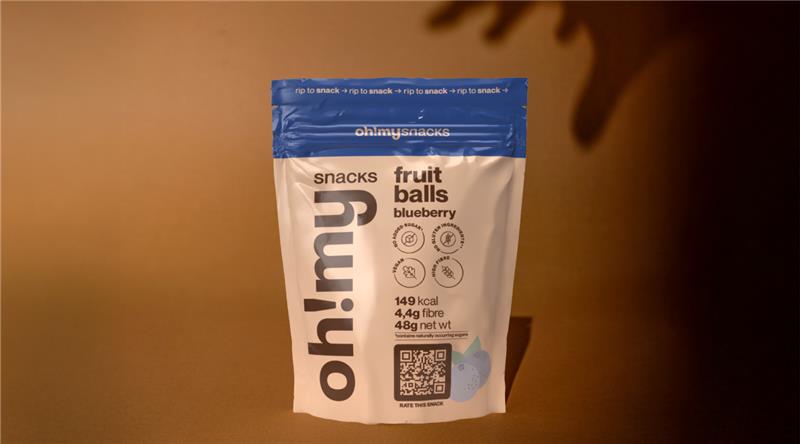
Halloween: sweets, tricks, and nutritional balance
With Halloween approaching, parties and sweets multiply everywhere. Although this is a fun time, it can be challenging for parents who want to maintain balanced eating habits at home.
The goal should not be to ban sweets, but rather to adopt strategies that allow children to enjoy this festive period in a balanced way, helping them to develop a healthy relationship with food from an early age. (1–4)
Research shows that explicit parental restriction of food can have unintended effects, such as increased desire for those foods and less healthy eating patterns. (1–4)
Therefore, the best approach is not visible restriction, but subtle management. In other words, using strategies such as avoiding large purchases of very sugary foods reduces sweet consumption without creating a sense of prohibition. (2,3)
What health organisations say
The World Health Organization (WHO) recommends reducing added sugar intake to less than 10% of total daily energy as a strategy to prevent overweight and dental caries in both children and adults. (5)
National guidelines also highlight the importance of avoiding regular offers of sweets and sugary drinks, especially at young ages, while encouraging healthy eating patterns that do not completely exclude “less healthy” foods, which can be eaten occasionally. (6–8)
Practical strategies
1.Set a day for dessert or allow sweets only after the main meal. This provides structure and predictability, reducing the fascination with “forbidden” foods. Routine helps promote balanced choices without the need for strict restrictions. (3,4)
2.Practise discreet control by avoiding buying large amounts of sweets and opting for smaller versions. This limits exposure without turning sweets into a forbidden subject. Managing availability is more effective than constantly saying “no”. (2,9)
3.Model moderation, eating sweets calmly and talking about them in a relaxed way teaches children to do the same, promoting a healthy relationship with food. (3,10)
4.Offer naturally sweet foods such as fruit more frequently. This helps children get used to milder flavours and increases their acceptance of healthy options. (11)
5.Avoid using sweets as a reward or punishment, as this creates emotional associations with food. It’s better to reinforce good behaviour with praise or enjoyable activities. (6,12)
6.Talk about food in a simple and positive way to help children understand why some foods should be eaten more or less often, fostering autonomy and food awareness. (3,11)
Conclusion
Completely denying sweets can make every piece of cake an even greater temptation. Structuring, educating, and setting an example are strategies with stronger scientific support to reduce excessive consumption and promote long-term healthy habits.
With clear rules, controlled portions, and nutritious alternatives, you can enjoy sweet moments without guilt, while teaching habits that last a lifetime. (1–6,11)
At Oh!My Snacks, we believe that balance begins with conscious and accessible choices. That’s why we offer practical and nutritious snack options that help maintain a positive relationship with food, even during times of greater temptation, such as Halloween.
Through balanced combinations, appropriate portions, and quality ingredients, we show that it’s possible to enjoy flavour without excess, promoting healthy habits that last all year round.
Here’s a list of some of our snacks that you can enjoy or share this Halloween:
Bibliography:
1. Say D, et al. Restrictive feeding and child eating behaviours: systematic review and meta-analysis. Appetite. 2023.
2. Werner LM, et al. Associations between restrictive feeding practices and children's dietary intake: systematic review. Appetite. 2024.
3. Hübner HL, et al. Associations of sugar-related food parenting practices and parental feeding styles with prospective dietary behaviour of children and adolescents: a systematic review (2017–2023). Front Public Health. 2024.
4. Hurley KM, et al. Caregiver feeding practices and children's dietary outcomes: systematic review. J Nutr. 2011.
5. World Health Organization. Guideline: Sugars intake for adults and children. WHO; 2015.
6. Direção-Geral da Saúde (Portugal). Alimentação Saudável dos 0 aos 6 anos. PNPAS/DGS; 2020.
7. FAO/WHO. Nutrition and snacks guidance and school feeding standards. FAO; 2019–2022.
8. Knowledge4Policy / Food-based dietary guidelines: recommendations for limiting sweets. EU Knowledge Gateway.
9. Rolls BJ. Portion size and energy intake: systematic evidence. Adv Nutr. 2014.
10. Birch LL, Fisher JO. Development of eating behaviours among children and implications for prevention of obesity. Int J Obes. 1998.
11. Birch LL, et al. Repeated exposure increases acceptance of novel vegetables in children: systematic evidence. Appetite. 2016.
12. American Academy of Pediatrics / HealthyChildren.org. How to tame your child's sweet tooth. 2022.
Author: Sofia Silva 5784N
